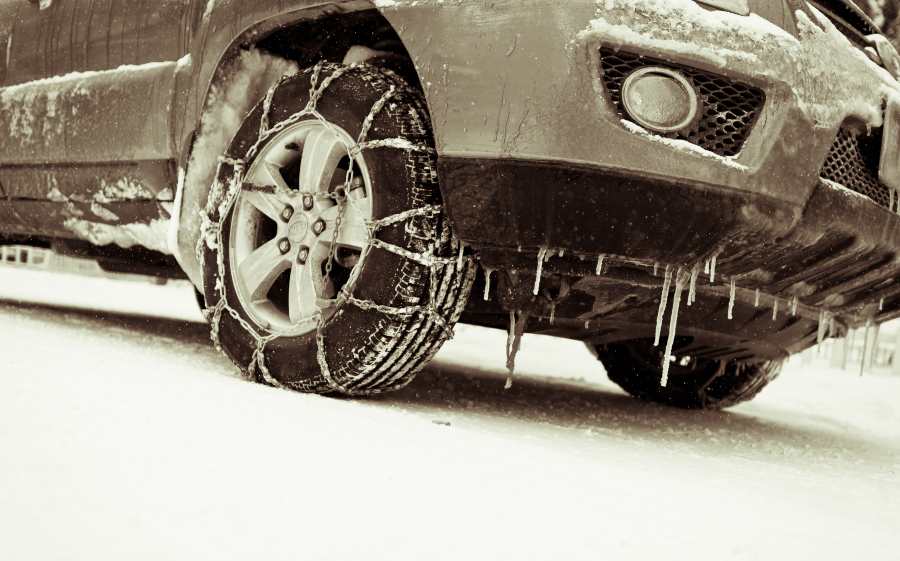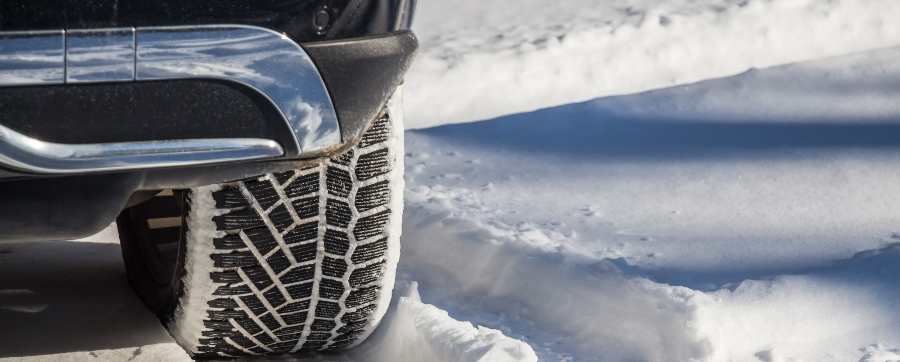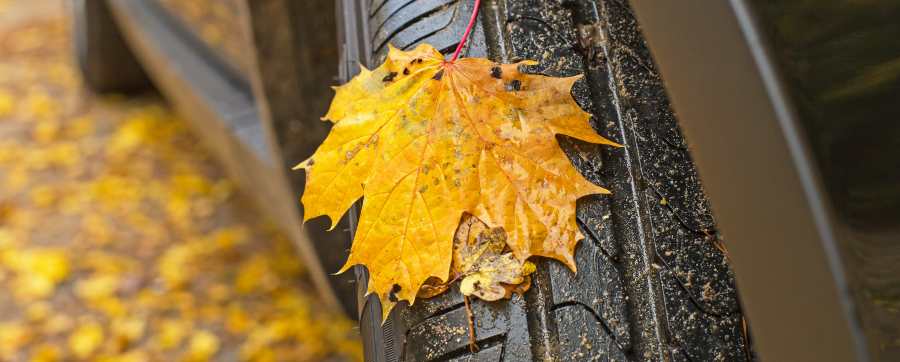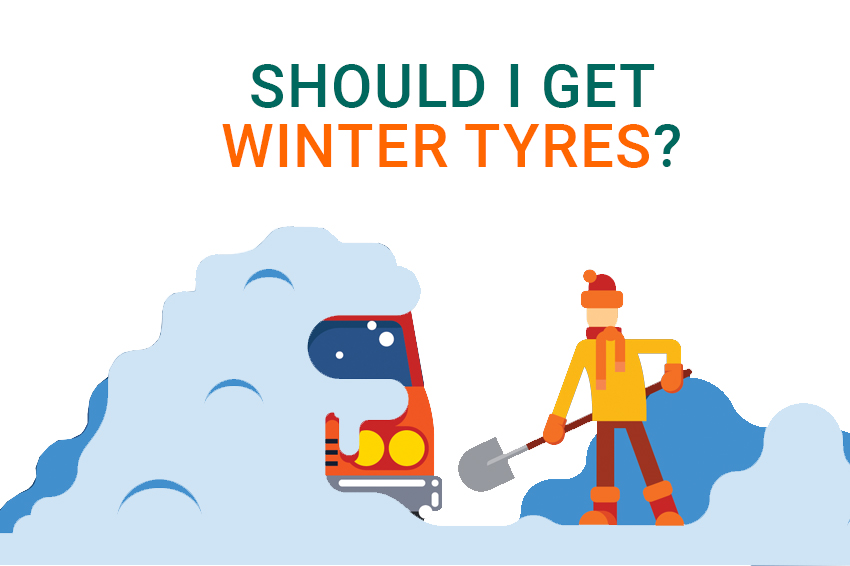Some years, winter can feel as though it lasts forever. In reality, as a season it only lasts 3 months, but the weather associated with it lasts a fair bit longer.
Every year it seems that we are being told that it’s the ‘coldest winter since records began’ and if that pattern continues, winters will keep on getting colder, more snow and ice and more caution needed on the roads.
So, given all of this information and speculation that UK weather will get worse, should you get winter tyres?
In this article we take a look at what you need to know about winter tyres including the different types, how much they cost and whether they’re something you should consider.
What are winter tyres?
Winter tyres are specifically designed to give you additional grip on the roads in cold weather. They are produced using a rubber compound that contains a greater amount of natural rubber in the mix compared to summer tyres. The tread block’s surface is covered with jagged slits and the actual tread grooves are noticeably deeper than they are conventional tyres.
These features are designed to offer improved braking and traction. They aren’t only designed for driving on snow but also in cold conditions on wet roads.
Preparation for winter driving should start when the outside temperature gets to 7℃, if you wait until the snow and ice hit then it could be too late to ensure that your vehicle is ready.
If in doubt about the type of tyres you’re looking at, you can tell winter tyres from your usual ones thanks to the snowflake symbol that appears on the sidewall.
What are the benefits of winter tyres?
The main benefit of winter tyres is improved grip. The jagged slits that cover the tread blocks are called sipes. It’s these sipes that provide hundreds of additional edges to grip the road surface.
These sips provide you with additional flexibility, allowing the movement of the rubber, which in turn enables the softer rubber body of the tyre to cling to the road, improving traction.
Summer tyres have a much more rigid and solid tread block, giving you much less control and grip on the roads in cold and icy conditions.
The deep grooves on the winter tyres are particularly good at dealing with loose snow, as they enable snow to become compacted within the grooves. As the snow clings to the tyre, it actually improves the grip.

The increased effectiveness of winter tyres isn’t just confined to snow and ice either. The deeper tread aids with water dispersion, which therefore reduces the chances of you aquaplaning on waterlogged roads. This is useful after a heavy downpour (something we are notorious for in the UK) and also when the roads are covered in slush, this is one of the worst road conditions to be honest.
The main benefits of having winter tyres fitted to your vehicle is the improved handling and braking efficiency you get when weather and road conditions are poor.
If you’re concerned about stopping time (and distance) when driving if it’s been snowing or raining or the roads are icy, your stopping time is reduced in these conditions when you have winter tyres fitted, in comparison with if you were driving in the same conditions with summer tyres.
However, having winter tyres isn’t quite a save all. It should be noted that they don’t prevent skidding or stop you from getting stuck in the snow, unfortunately. Think of them as winter or cold weather tyres and not snow tyres.
Why aren’t winter tyres more common in the UK?
You’d think that given the pretty abysmal weather we have in the UK that all drivers would ensure that their cars were fitted with winter tyres as soon as the temperature dropped. So, why aren’t they?
In 17 European countries, including Austria, Germany and Sweden, having winter tyres fitted is a legal requirement. It’s standard for most drivers, especially those who live in more mountainous regions to change their tyres with the seasons and also to carry snow chains – though these aren’t permitted in some countries.
In Bosnia Herzegovina drivers must have snow tyres fitted, they must also carry a shovel and snow chains in their vehicles at all times between the 1st November and 15th April.
In the UK it’s rare for car owners to have two sets of tyres for their vehicle.
As we’ve already mentioned, when the temperature drops below 7℃ that’s the point when winter tyres are at their best. But the biggest problem with winter tyres, especially when it comes to countries with changeable weather conditions (such as the UK) is that they don’t perform well once the temperature gets even a few degrees warmer. Poor performance when the weather is better is most noticeable when driving around bends or increased braking distances.
Unsurprisingly, many drivers take the view that it simply isn’t worth the hassle to fit winter tyres. This is especially the case for people who live in areas where the roads are well-treated (gritted and cleared) and harsh weather conditions only occur once in a blue moon. Also, in the event of a severe weather warning, rather sensibly, a considerable number of drivers follow the recommendation not to go out in their car.
How much do winter tyres cost?
The thought of spending hundreds of pounds for a set of tyres that you use for only a few weeks of the year can be off-putting. However, if they are going to be practical (e.g. you live in the Scottish highlands or somewhere in the Pennines) how much can you expect to pay for a set of winter tyres for your car?
In truth, it can be rather expensive to purchase a complete set of winter tyres for the reasons we outline below.
If you’re planning on getting a set of winter tyres then the first thing you should do is look into investing in another set of rims for your winter tyres. We have previously mentioned that the salt used to grit roads in the UK is corrosive to car exteriors and steel rims are actually resistant to this damage.
Make sure you get a spare winter tyre. If you do experience issues with one of your winter tyres and replace it with a standard tyre then you will notice a marked difference in the grip and performance you experience.
A set of winter tyres plus rims for a family hatchback is likely to cost between £400.00 to £770.00, not including the cost of fitting. This price also doesn’t include the cost of a spare tyre.

There are a number of tyre dealers and car dealerships that will supply and fit winter tyres and some have also introduced a ‘tyre hotel’ where you can store your spare set until it’s time to use them again. Storage prices range from £8 per tyre per season (so £32 for a full set) at an ATS Centre up to an estimated £12 per tyre per season (£48 for a full set) plus an admin fee at places like Kwik Fit as part of their Tyre Swap scheme.
These prices may seem high (for storage) however, storage of tyres when they aren’t in use is not as simple as keeping them in a shed until they are needed. In order to ensure that your tyres are in the same condition they were when you put them into storage.
How do I store my tyres when not in use?
Once you have removed your winter (or summer) tyres and they are ready to be stored, you need to ensure that they are stored in very specific conditions to ensure that they aren’t warped, damaged or the rubber degraded when time comes to put them back on your vehicle.
It’s recommended that you don’t store your tyres in a garage or attic due to the temperature variations and dampness that can occur in both locations. Better places for storage are a basement or workshop.
It is due to the difficulty of finding an appropriate place if storage space is at a premium, that many companies offer a storage facility for your tyres where they will look after them for you at a price.
Dismounted tyres (those not mounted on wheels)
- Tyres must be stored in a room not exposed to sunlight as ozone has a corrosive effect on rubber
- They need to be in a room where air circulates freely (but not a draught)
- They need to be kept at a somewhat consistent low temperature
- They should be stored upright rather than stacked on top of each other (which means they need a little more room than you expect)
- Tyres should not be hung up as this can cause damage to their shape
- You can store each tyre separately in a garden sack with as much air squeezed out as possible in order to reduce any exposure to dust and moisture
- If your tyres have an air chamber this must be half-deflated before you store them
- Before storing your tyres ensure that there is no moisture inside them as this can cause damage to the metallic parts of the tyre and debris can cause blockages to the air valves.
Mounted tyres
- It’s preferable to remove the entire wheel rather than just the tyre, this not only makes them easier to store, but it also reduces the amount of deformity that can happen when they’re not in use.
- Though it may seem illogical, as the tyres are mounted, you don’t need as much room to store them as you can hang them up. You can also store them upright
- Regularly rotate your tyres when you are storing them to prevent them from becoming bent.
Does my insurance change if I have winter tyres?
Most insurers recognise that having winter tyres fitted to your vehicle can have a positive impact on road safety. We do recommend that you let your insurer know if you have had winter tyres fitted, but it shouldn’t affect your insurance premium at all, as long as the tyres you have selected are the correct specification.
Are there any alternatives to winter tyres?
If you don’t want to invest in winter tyres then there are some lower-cost, but still effective alternatives.
Tyre socks
Tyre socks are synthetic fabric wraparounds that fit over your tyres to provide extra grip in snowy or icy conditions. They’re designed to give extra grip in localised patches of snow and ice. Therefore, they are most useful for pulling away from an iced-up driveway. These cost around £50 a set depending on tyre size. You will have to remember to remove them from your tyres once you’re on clear roads. If this is forgotten the socks will simply disintegrate.

All-season tyres
Another option is all-season tyres. These offer more flexibility than seasonal (summer and winter) tyres. They have a tread pattern that is something like a combination of summer and winter tyres.
Having all-season tyres fitted to your car means that you don’t have to think about changing them over when the seasons change. As with everything, there is a bit of a compromise, you have tyres that make for a better drive on winter roads, however performance on roads when the weather warms up is not as good as it would be if you had summer tyres fitted.
Should I get winter tyres?
To be honest, it depends completely on your location and the sort of use you are going to get out of them during the winter.
If you’ve got a vehicle you depend on all year round, and drive on roads that are prone to becoming dangerous when the weather is harsher, you may want to consider the purchase of winter tyres. In these cases it would be a sensible investment.
If you live in an isolated location and harsher winter storms are common then having winter tyres fitted to your vehicle would be a wise decision. Having them fitted will improve your car’s handling, increase your confidence when driving in these conditions and may also mean that you are cut off for shorter periods of time when the weather does get worse in the winter months.
Thinking of having winter tyres fitted to your vehicle, don’t wait until the snow has arrived, because that’s when it’s too late. In European countries where it’s a requirement (and even many countries where it isn’t) they arrange to have winter tyres fitted in late October and have them removed in late April.
Conclusion: Are winter tyres necessary?
Winter tyres are designed to give you additional grip in cold weather. They offer improved braking and traction in snow, ice, and the rain.
The biggest benefit of winter tyres is that they have improved grip thanks to their extra flexibility which enables the softer rubber body of the tyre to cling to the road.
It’s not a low-cost investment, but if you are going to get use out of them and keep them on your vehicle all winter then it will increase the life of your summer tyres.
We recommend that you consider purchasing winter tyres if you often drive on roads that aren’t well-maintained or gritted over the winter months, or if they will make you feel safer and increase your confidence when driving on icy roads.



“Your stoppage time is increased hugely with winter tyres when driving in snow, ice and rain compared to summer tyres.”
Wrong ! – you need a decent proof reader!